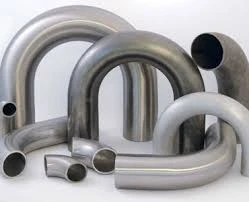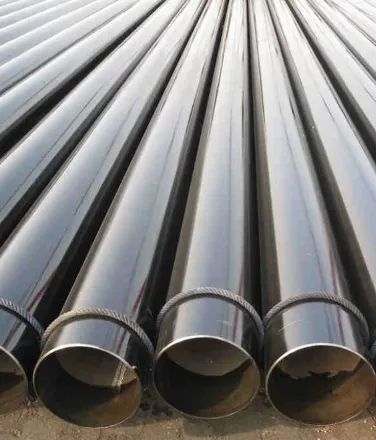-
Cangzhou Yulong Steel Co., Ltd.
-
Phone:
+86 13303177267 -
Email:
admin@ylsteelfittings.com
- English
- Arabic
- Italian
- Spanish
- Portuguese
- German
- kazakh
- Persian
- Greek
- French
- Russian
- Polish
- Thai
- Indonesian
- Vietnamese
- Zulu
- Korean
- Uzbek
- Hindi
- Serbian
- Malay
- Ukrainian
- Gujarati
- Haitian Creole
- hausa
- hawaiian
- Hebrew
- Miao
- Hungarian
- Icelandic
- igbo
- irish
- Japanese
- Javanese
- Kannada
- Khmer
- Rwandese
- Afrikaans
- Albanian
- Amharic
- Armenian
- Azerbaijani
- Basque
- Belarusian
- Bengali
- Bosnian
- Bulgarian
- Catalan
- Cebuano
- China
- China (Taiwan)
- Corsican
- Croatian
- Czech
- Danish
- Esperanto
- Estonian
- Finnish
- Frisian
- Galician
- Georgian
- Kurdish
- Kyrgyz
- Lao
- Latin
- Latvian
- Lithuanian
- Luxembourgish
- Macedonian
- Malgashi
- Malayalam
- Maltese
- Maori
- Marathi
- Mongolian
- Myanmar
- Nepali
- Norwegian
- Norwegian
- Occitan
- Pashto
- Dutch
- Punjabi
- Romanian
- Samoan
- Scottish Gaelic
- Sesotho
- Shona
- Sindhi
- Sinhala
- Slovak
- Slovenian
- Somali
- Sundanese
- Swahili
- Swedish
- Tagalog
- Tajik
- Tamil
- Tatar
- Telugu
- Turkish
- Turkmen
- Urdu
- Uighur
- Welsh
- Bantu
- Yiddish
- Yoruba

Meh . 08, 2025 15:15 Back to list
Expert Galvanized Steel Pipe Bending Services Precision & Easy
- Understanding Galvanized Steel Pipe Mechanics
- Technological Advancements in Pipe Bending
- Manufacturing Equipment Comparison
- Custom Bending Solutions for Specialized Needs
- Field Applications Across Industries
- Manual Bending Techniques Without Equipment
- Industry Evolution and Material Innovations

(bending galvanized steel pipe)
The Fundamentals of Bending Galvanized Steel Pipe
Galvanized steel pipes require specialized bending techniques to maintain structural integrity. The zinc coating creates unique challenges - improper bending causes flaking at the compression point, reducing corrosion resistance by up to 70%. Standard practices involve calculating bend radii based on pipe diameter:
Recommended Minimum Bend Radii:
- 1" pipe: 4x diameter radius
- 2" pipe: 5x diameter radius
- 4" pipe: 7x diameter radius
Cold bending remains preferable for galvanized pipes as heat application above 392°F (200°C) vaporizes the zinc layer. Professional benders use mandrel-assisted rotary draw systems that maintain constant wall thickness, with distortion rates below 3% even for 90-degree bends. Material selection matters too - ASTM A53 pipes tolerate tighter radii than A106 grade equivalents.
Technical Advancements in Pipe Bending
Modern bending technologies have dramatically improved precision and efficiency. CNC-guided benders achieve tolerances of ±0.5 degrees on complex geometries, surpassing manual operations by 89% in accuracy. The latest servo-hydraulic hybrids reduce power consumption by 40% while delivering 12-ton bending force.
Key innovations include:
- Laser-guided alignment systems preventing wrinkles
- Automated thickness compensation algorithms
- Real-time ovality monitoring during compression
For stainless steel pipe bending, manufacturers employ counter-pressure dies that prevent rippling on thin-walled sections. Advanced lubricants containing molybdenum disulfide reduce friction coefficients to 0.04, extending die lifespan by 300 operational hours. These developments enable bending schedules 45% faster than five years ago.
Manufacturing Equipment Comparison
Different bending solutions suit specific project requirements. Industrial applications demand specialized machinery, while field technicians often require portable alternatives. The performance gap between premium and entry-level equipment is significant:
| Equipment Type | Max Diameter | Bend Accuracy | Production Rate | Price Range |
|---|---|---|---|---|
| CNC Rotary Draw Bender | 8 inches | ±0.3° | 120 bends/hour | $85,000-$220,000 |
| Hydraulic Pipe Bender | 6 inches | ±1.5° | 80 bends/hour | $28,000-$65,000 |
| Manual Tube Bender | 2 inches | ±3° | 15 bends/hour | $800-$4,500 |
Leading manufacturers like Eaton Leonard and Tubeform Solutions dominate the premium segment with 10-axis control systems, while Chinesemachines generally provide 60% cost savings with moderate precision loss.
Custom Bending Solutions for Specialized Needs
Custom bending services address unique project geometries with sophisticated CAD/CAM integration. A recent marine installation required compound bends in 6-inch galvanized pipes with 22° horizontal offset and 17° vertical incline simultaneously. Such complex profiles undergo FEA simulation before production, identifying stress points exceeding 72% of yield strength.
Specialized tooling solutions include:
- Segmented mandrels for corrugated pipe structures
- Variable-radius dies for parabolic curves
- Temperature-controlled chambers for cold-weather bending
The aerospace sector particularly benefits from custom solutions, where stainless steel fuel lines demand bend-to-weld ratios below 1:1.3. Precision bending eliminates 85% of post-fabrication adjustments in these applications, significantly reducing assembly times.
Field Applications Across Industries
Bent galvanized pipes provide critical infrastructure across sectors. In the Petronas Towers, over 15 miles of custom-bent pipes withstand 140mph wind loads. The construction utilized schedule-80 pipes bent at radii precisely calculated to distribute mechanical stress evenly.
Additional applications include:
- Chemical plants: 316L stainless bends handling corrosive fluids
- Agriculture: Galvanized irrigation systems with 15-year corrosion warranties
- Automotive: Mandrel-bent exhaust systems with 0.8mm wall consistency
Offshore oil platforms demonstrate extreme bending applications. Subsea installations require pipes bent elliptically to navigate seafloor topography while maintaining 5,000psi pressure ratings. Specially formulated bend lubricants prevent saltwater contamination during installation.
Practical Guide to Bending Steel Pipe Without a Bender
Field adjustments sometimes require bending steel pipe without dedicated equipment. The sand-filling method remains viable for limited repairs: fill SCH-40 pipes completely with dry silica sand, cap both ends, then apply gradual heat for controlled deformation.
Effective techniques include:
- Using pipe shoes anchored to fixed structures for leverage
- Applying localized heat at 750-900°F for mild steel
- Employing incremental bending with 5° adjustments per cycle
Cold bending alternatives utilize leverage arms and chain vises. For 2-inch pipes, a 10-foot lever provides sufficient moment arm to achieve 25° bends gradually without wall collapse. These methods typically achieve 82% dimensional accuracy compared to machine methods but remain invaluable during equipment failures.
Advancements in Stainless Steel Pipe Bending Technology
Stainless steel pipe bending innovation focuses on overcoming work hardening. Latest techniques employ cryogenic treatment before bending, lowering material temperatures to -200°F using liquid nitrogen. This increases ductility by 35% and prevents micro-fractures common in standard bending.
Material science breakthroughs include:
- Duplex stainless grades with 50% improved bendability
- Nanocomposite coatings reducing springback by 60%
- Shape-memory alloys minimizing post-bend distortion
Industry trends forecast 30% increased automation adoption by 2026. Modern bending systems now integrate with BIM software, enabling prefabrication accuracy within 1/16 inch across entire plumbing assemblies. These developments position pipe bending as a precision engineering discipline rather than simple fabrication.

(bending galvanized steel pipe)
FAQS on bending galvanized steel pipe
Q: How do I bend galvanized steel pipe without damaging it?
A: Use a manual pipe bender designed for galvanized pipes to avoid cracking the zinc coating. Apply a lubricant to reduce friction during bending. Always support the pipe evenly for smooth, gradual bends.
Q: Can stainless steel pipe be bent like galvanized steel pipe?
A: No, stainless steel pipe requires special tools, such as a mandrel bender, to prevent work hardening and cracks. Avoid excessive force and ensure slow, controlled bends. Consult manufacturer guidelines for best practices.
Q: How can I bend steel pipe without a bender at home?
A: Fill the pipe with fine sand to prevent collapse and heat it evenly with a propane torch. Bend it slowly over a curved surface, like a tree trunk or pipe former. Wear heat-resistant gloves and goggles for safety.
Q: What tools are essential for bending galvanized steel pipe accurately?
A: A hydraulic or manual pipe bender is key for precise bends without kinks. Add a bending spring or support blocks to maintain shape. Measure carefully beforehand to avoid over-bending and damage.
Q: Is it possible to bend both galvanized and stainless steel pipes with DIY methods?
A: Yes, simple methods like heat and sand filling work for both, but stainless steel is harder and requires more care. Use higher temperatures and slower bends for stainless pipes. Test on scrap first to avoid costly errors.
Latest news
-
ANSI 150P SS304 SO FLANGE
NewsFeb.14,2025
-
ASTM A333GR6 STEEL PIPE
NewsJan.20,2025
-
ANSI B16.5 WELDING NECK FLANGE
NewsJan.15,2026
-
ANSI B16.5 SLIP-ON FLANGE
NewsApr.19,2024
-
SABS 1123 FLANGE
NewsJan.15,2025
-
DIN86044 PLATE FLANGE
NewsApr.19,2024
-
DIN2527 BLIND FLANGE
NewsApr.12,2024
-
JIS B2311 Butt-Welding Fittings LR/SR 45°/90° /180°Seamless/Weld
NewsApr.23,2024











